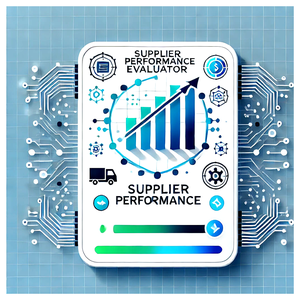
This tool evaluates supplier performance using machine learning (Decision Tree Regressor). It is designed to assist procurement and supply chain professionals in ranking suppliers based on predicted performance. The GUI, built with Tkinter, allows users to load data, evaluate models, view a decision tree, assess model accuracy, and download results in Excel format.
The app uses Python and several libraries for machine learning, data visualization, and UI development:
In today's procurement and supply chain management processes, supplier performance evaluations often suffer from several critical gaps:
These gaps highlight the need for an automated, data-centric solution that can provide objective, real-time insights into supplier performance, ultimately supporting better procurement decisions.